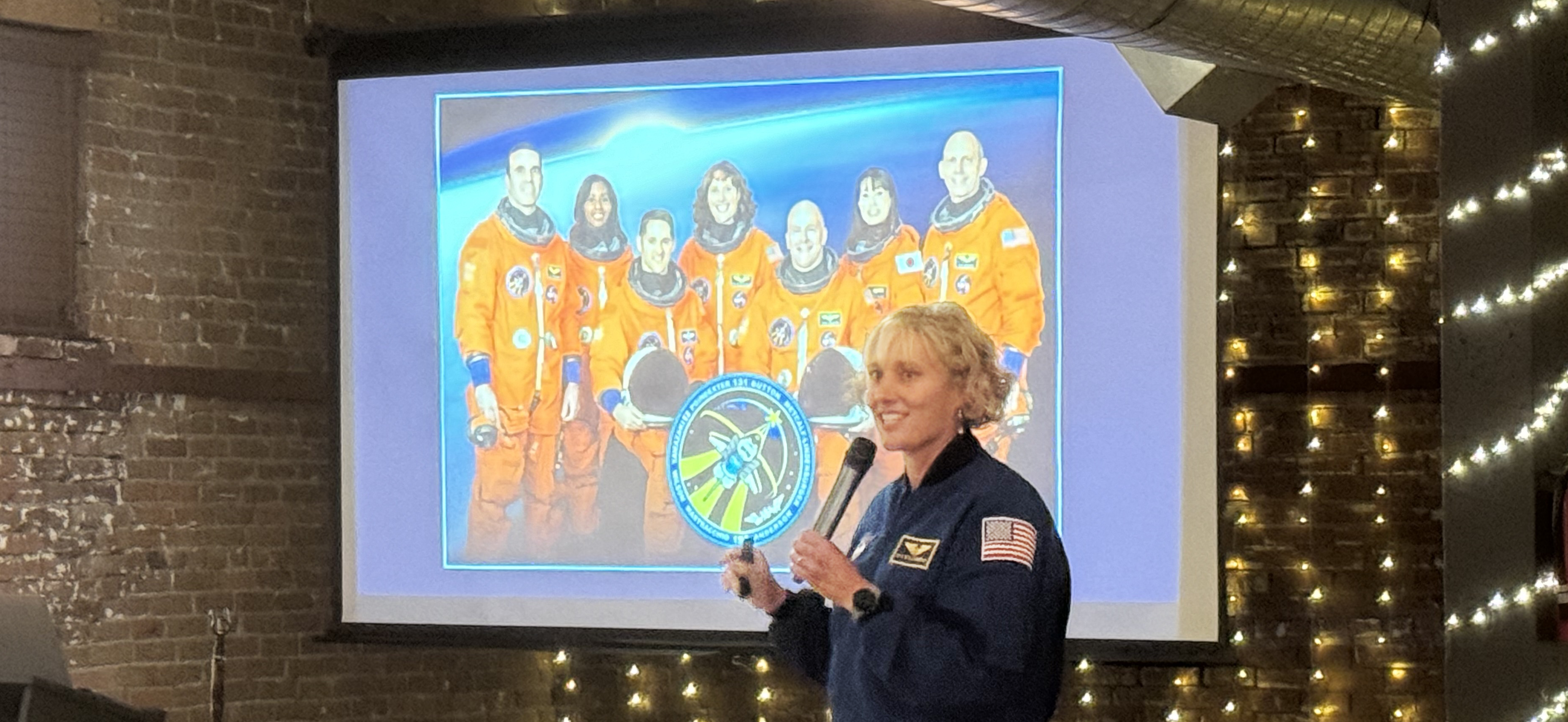
Today marks the start of American Education Week, which celebrates the invaluable contributions of educators, school staff, and the entire educational community. At Challenger Center, we recognize the vital role teachers and educators play in inspiring students’ curiosity and fostering a love of learning, especially in STEM.
I had the privilege of speaking with Dorothy (Dottie) Metcalf-Lindenburger, a retired astronaut, former high school science teacher, and passionate advocate for STEM education. Dottie’s unique career journey—from teaching in the classroom to flying aboard the International Space Station—provides powerful insights into the impact of hands-on STEM learning on students’ confidence and creativity.
Q&A – From Classroom to Space Station
Kevin: Who were your mentors that first sparked your interest in STEM?
Dottie: My parents were my first STEM mentors. My mom was a high school math teacher, and my dad had been a middle school science and shop teacher. Then in middle school, my science teacher, Mr. Jordan, asked me to present at a conference in California. As a student growing up in Colorado, it was a big deal to travel and share my project. Outside of my parents, he was the first STEM teacher to help me realize that not only did I enjoy science, but I was good at it. I would also add my high school Science Olympiad advisor and chemistry teacher, Mr. Lundt, and my high school Calculus teacher and Cross Country coach, Mr. Luckasen, to my list of mentors.
Kevin: How did teaching in the classroom help prepare you for your journey to the International Space Station?
Dottie: I taught high school science at a Title I school in Vancouver, WA. For that first year, I didn’t have a curriculum, textbook, or classroom; I had to be creative and make do. I think this helped me because I looked for numerous ways to bring hands-on STEM into my classroom. I worked with companies, museums, non-profits, and parents. My curriculum was built on teamwork and applied sciences, which is similar to the ISS. Astronauts adapt, pivot, work as a team, and know something about a lot of sciences (biology, ecology, geology, astronomy, engineering, etc.)
Kevin: What is a memorable moment from your career where you saw students become truly engaged in STEM?
Dottie: I had several hands-on labs that my students really liked: creating a cloud in a bottle, putting an egg into a conical flask, launching match and foil rockets, and demonstrating tectonic plate boundaries with Oreo cookies. When I built a Dobsonian telescope for my astronomy class, I allowed students to use it before or after school. They loved looking at the moon, finding Jupiter, and seeing Saturn’s rings. In all of these cases, I gave students a problem to solve or empowered them to use equipment and discover on their own.
Kevin: What more could we be doing to provide more hands-on learning experiences for students?
Dottie: We need to give students real problems to solve. The cloud in a bottle lab I mentioned was related to climate change and storms. Students came away with an understanding of cloud seeding or understanding how storms develop. We need to give them the confidence that they ARE scientists and engineers.
Kevin: As we celebrate American Education Week, what do you believe is the role of STEM education in shaping the next generation of problem-solvers and innovators?
Dottie: Many of the complex and significant problems and social issues of the present and future—climate change, access to clean water, fighting diseases and cancers, AI, cyber security, exploring our solar system—are going to be solved by people working in STEM or having an understanding of STEM processes. Therefore, all students need to understand the fundamentals of scientific and engineering processes. The best STEM programs will go beyond the basics; they will let students be problem solvers and innovators, giving them authentic experiences and opportunities.
Supporting Educators and Tomorrow’s STEM Leaders
From her early mentorship experiences to the creative problem-solving skills she developed in the classroom and applied in space, Dottie’s journey underscores the importance of providing students with real-world, interactive learning opportunities. As she aptly notes, STEM education is not just about teaching facts and figures—it’s about inspiring students to think critically, collaborate, and tackle the world’s most pressing challenges.
At Challenger Center, we are committed to supporting educators in making these experiences a reality for students. By offering simulated, hands-on STEM programs, we give students opportunities to explore and see themselves as the next generation of problem-solvers, innovators, and leaders—just as Dottie and countless other educators have done for their students.
